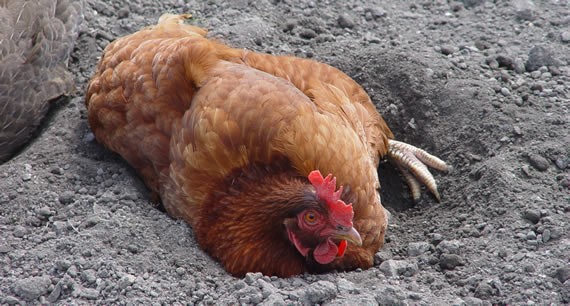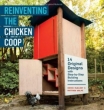Poultry Pests & Diseases
Worming chickens
Hens, like most animals, can suffer from internal parasites (worms). It is now possible to send samples of faeces to a laboratory to have the number of worm eggs counted (faecal worm egg count). This will tell you if your poultry need to be wormed and may save you the cost of wormer and reduce the risk of wormer resistance. It is good practice anyway to carry out regular faecal worm egg counts to make sure your worming regime is effective.
The only chemical wormer licensed for poultry is Flubenvet Premix, a powder that is added to feed for seven days. No other feed should be offered during the treatment period.
There is no withdrawal period for eggs but poultry for the table must not be eaten during the treatment period or for seven days after treatment ends. One feed manufacturer now makes a layer pellet with Flubenvet added.
It is common practice to worm every three months. New birds should be wormed before joining the flock.
Herbal wormers are also available if you don’t want to use chemicals.
External parasites
Hens can also suffer from external parasites. The three most common ones are lice (fleas), scaly leg mite and red mite.
Lice
Lice live on the hen and lay eggs on the base of the feathers, usually around the vent. Although their presence won’t kill a hen, they do cause intense irritation and the hen will be unhappy and spend much time preening. Dust bathing helps to reduce infestation but hens should be checked regularly and treated with louse powder if there is evidence of infestation.
 A Warren dust bathing
A Warren dust bathing
The lice are small, clear creamy ovals and are clearly visible to the naked eye. The eggs will show as a grey powdery deposit attached firmly to the base of feathers. You can quickly pluck out any feathers with a heavy egg burden and dust the hen every week for four weeks with a natural louse powder. It also helps to dust the nest boxes and even the dust baths with louse powder.
Scaly leg mite
Scaly leg mite is, as the name suggests, a mite that lives under the hen’s leg scales, causing irritation. The scales will lift. It is easily treatable; paint the legs with surgical spirit weekly for three weeks, using a small paintbrush. The scales will remain lifted until moulted in the autumn.
Red mite
Red mite is a different proposition entirely. A red mite infestation is debilitating and can lead to death in hens. The red mite does not generally live on the hen; it lives in the henhouse, in rotten, broken wood or roofing felt, crawls on to the hen while it roosts and sucks its blood, leading to anaemia. Check the hen house regularly for evidence of infestation and treat immediately it becomes apparent.
There is a number of products available commercially for treating red mite, including powders and sprays.
Prevention is better than cure. When something does appear to be wrong with a hen seek advice immediately - either through our forums or one of the many websites which are dedicated to poultry (see the related sites below), from a book or magazine, from an experienced keeper or breeder, or from a vet.
Bear in mind that the cost of employing a vet is likely to be more than your bird is worth in purely monetary terms. Only you can decide whether you are willing to pay that price.
- Previous « Poultry Health and Wellbeing
- Next Red Mite »

About Rosemary Champion
Rosemary lives on a 12 acre smallholding in Angus, in the east of Scotland, where she keeps Ryeland Sheep, Shetland cattle and assorted poultry. She was destined to be a smallholder from an early age.
Further Reading
 Chicken & Eggs: River Cottage Handbook No.11 Mark Diacono |  Storey's Guide to Raising Chickens Gail Damerow |  A Beginners Guide to Caring for Ex-Batts Jo Barlow |  Reinventing the Chicken Coop Matthew Wolpe |  Chickens: The Essential Guide to Choosing and Keeping Happy, Healthy Hens Suzie Baldwin |
Smallholding shop
When you click links below and make a purchase, this may result in this site earning a commission from eBay.

Galvanised Chick Feeder
Galvanised chick… from £23.60 + p&p

Plastic Poultry Feeder 3kg
Super Feeder Hoppers. Capacity… from £6.40 + p&p

Scaly Leg Spray 500ml
Net Tex Scaly Leg Spray.… from £9.52 + p&p

Poultry Drink 250ml
Battle Hayward and Bower… from £4.21 + p&p
















